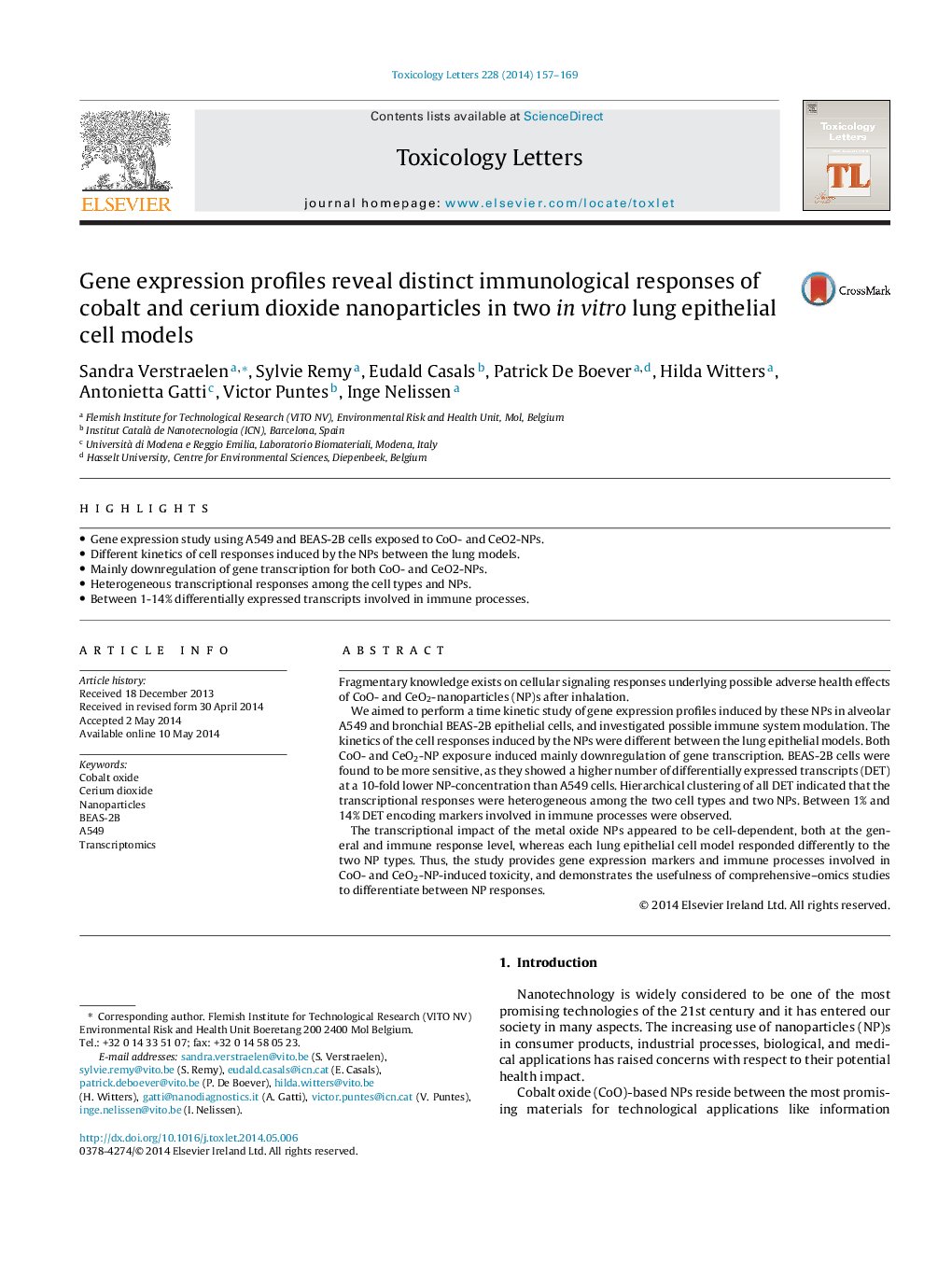| Article ID | Journal | Published Year | Pages | File Type |
|---|---|---|---|---|
| 2598938 | Toxicology Letters | 2014 | 13 Pages |
•Gene expression study using A549 and BEAS-2B cells exposed to CoO- and CeO2-NPs.•Different kinetics of cell responses induced by the NPs between the lung models.•Mainly downregulation of gene transcription for both CoO- and CeO2-NPs.•Heterogeneous transcriptional responses among the cell types and NPs.•Between 1-14% differentially expressed transcripts involved in immune processes.
Fragmentary knowledge exists on cellular signaling responses underlying possible adverse health effects of CoO- and CeO2-nanoparticles (NP)s after inhalation.We aimed to perform a time kinetic study of gene expression profiles induced by these NPs in alveolar A549 and bronchial BEAS-2B epithelial cells, and investigated possible immune system modulation. The kinetics of the cell responses induced by the NPs were different between the lung epithelial models. Both CoO- and CeO2-NP exposure induced mainly downregulation of gene transcription. BEAS-2B cells were found to be more sensitive, as they showed a higher number of differentially expressed transcripts (DET) at a 10-fold lower NP-concentration than A549 cells. Hierarchical clustering of all DET indicated that the transcriptional responses were heterogeneous among the two cell types and two NPs. Between 1% and 14% DET encoding markers involved in immune processes were observed.The transcriptional impact of the metal oxide NPs appeared to be cell-dependent, both at the general and immune response level, whereas each lung epithelial cell model responded differently to the two NP types. Thus, the study provides gene expression markers and immune processes involved in CoO- and CeO2-NP-induced toxicity, and demonstrates the usefulness of comprehensive–omics studies to differentiate between NP responses.
